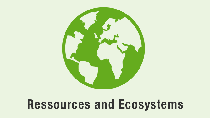Sustainability
BASF produces methanol according to the biomass balance approach
November 12, 2018

BASF has started production of methanol on the basis of renewable raw materials according to the biomass balance approach. The product name is EU-REDcert-methanol. The company replaces fossil raw materials with second-generation renewable raw materials and uses waste as well as residual materials. As a result, BASF reduces emissions of climate-damaging greenhouse gases by at least 50 percent compared with conventionally produced methanol. In terms of its chemical and physical characteristics, biomass balanced methanol is identical to methanol produced from fossil resources. BASF markets the EU-REDcert-methanol to customers and also uses it itself as an intermediate for other biomass balanced products.
Methanol is an important raw material for many products from different value chains and application areas. Derived products such as formaldehyde, acetic acid and methylamines are very important in terms of volume. Other important derivatives include methyl tert-butyl ether, methyl methacrylate, polyalcohols and silicones. Methanol also serves as an energy supplier and can be used as a raw material for chemical conversion into other fuels or fuel additives.
Methanol certified according to REDcert standard
The EU-REDcert-methanol is certified according to the REDcert standard. The certificate, which was founded by leading associations and organizations of the German agricultural and biofuel industry, proves the sustainable origin of the biomass used and the information on the reduction of greenhouse gas emissions. It is a standard for use as biofuel, recognized by the European Commission under the Renewable Energy Directive (RED).
The biomass balance approach is comparable to the green electricity principle. The electricity taken from the socket does not necessarily come from renewable energy, but the corresponding amount of renewable energy is fed into the grid. Another decisive factor in the biomass balance approach is that the proportion of renewable raw materials in the system as a whole is correct and is mathematically assigned to the certified BASF products. The process is used for numerous BASF products (e.g. superabsorbents, dispersions and plastics) that are independently certified.
